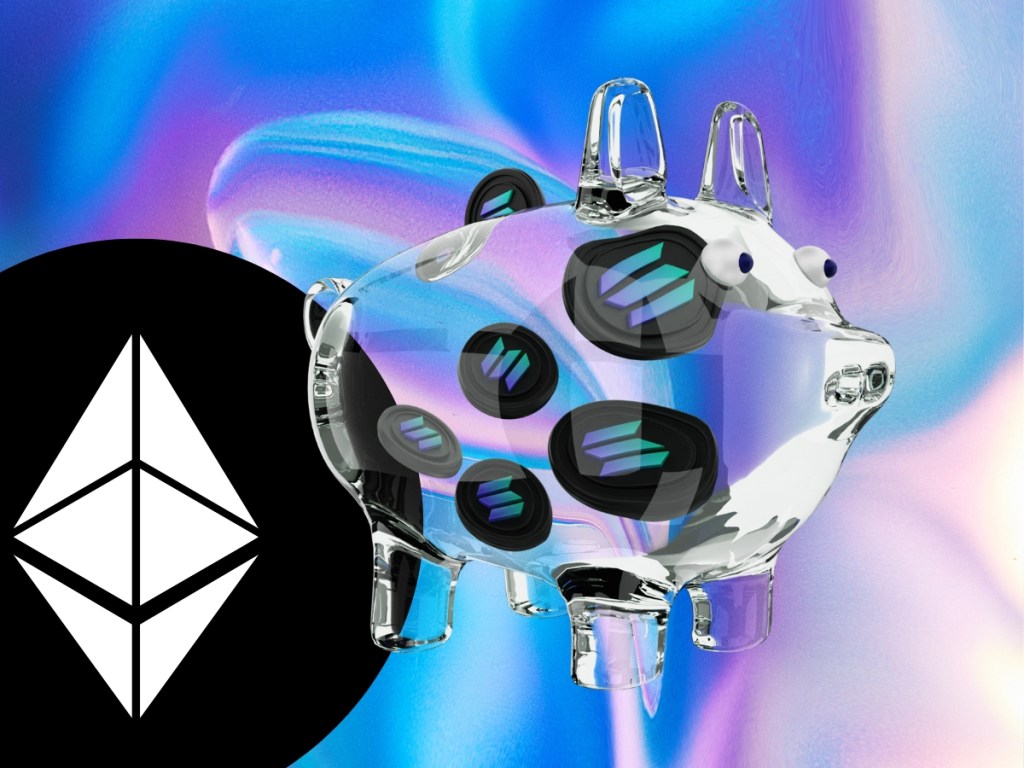Ethereum vs Solana: Right now an ideological battle of the blockchains is in full swing.
Hardcore users of the younger blockchain Solana (SOL) are adamant that their network will survive, in spite of the fact that the price of the SOL token has fallen a touch over 96% from its all time high in November last year.
Solana is staring down the barrel of a number of serious problems, with many of the major developers from the Solana network migrating to its biggest competitor: Ethereum.
Lets start by breaking down the difference between the two major blockchains.
What is Ethereum?
Ethereum is the first ever programmable blockchain, which allows developers to build decentralised applications, create smart contracts, launch DeFi (decentralised finance) apps as well as minting new cryptocurrencies and non-fungible tokens(NFTs). If all of those words felt like a lot to take in, you can think of Ethereum as a giant virtual computer that allows for the creation of all things crypto.
Ethereum was built specifically with the intention of being everything to everyone and serving the broadest possible range of functions in the crypto space, and so far that’s exactly what Ethereum has offered crypto users.
At the time of writing Ethereum is the largest smart contract blockchain network by both market capitalisation and developer activity. Ethereum’s native token ‘Ether’ (ETH) is currently trading for US$1,769 and flexes a total market cap of US$144 billion, making it the second-largest cryptocurrency today.
What is Solana?
Solana launched during the peak of the 2017 crypto bull run and was originally created as a solution to many of the problems that Ethereum faced. The biggest problem that Solana looked to solve was ‘scalability’ which refers to how many transactions and how much activity a blockchain network can handle at a given time.
In it’s heyday, it was often referred to as a potential ‘Ethereum-killer’, but recent events have made put that title under a fair bit of stress. Solana focuses heavily on speed and scalability whereas Ethereum focuses more specifically on decentralisation and security.
At the time of writing Solana (SOL) has fallen all the way from 9th place to number 17 in terms of market capitalisation and is currently changing hands for US$9.70 apiece, representing a 96% decline from its all time high in November last year. It has a total market capitalisation of US$3.5 billion, which is just 2.4% of Ethereum’s total market cap.
What’s the Ethereum vs. Solana drama?
Both blockchains have their own respective ecosystems of users and developers with loads of DApps (decentralised applications) running on each of them. However its important to note that Ethereum remains the most popular because it offers a larger and more sophisticated ecosystem of DApps. Ethereum is the more robust of the two blockchains and has been around for roughly two years longer than Solana.
As such, Ethereum doesn’t suffer from the same technical issues that have plagued Solana in the past, which has seen the Solana network go offline on numerous occasions, something its founder Anatoly Yakovenko has labelled a “curse” on the network.
Most recently the ETH vs. SOL argument has been reignited with Solana’s price tanking in the wake of the collapse of formerly world-leading crypto exchange FTX and its sister hedge fund Alameda Research. FTX and Alameda were massive investors in the Solana project, and the collapse of the FTX crypto empire has spelled disaster for both the price and development of SOL.
Solana’s biggest NFT projects move to Ethereum & Polygon
The most recent example of the Ethereum vs. Solana debate can be found in the decision of popular NFT creator ‘Frank’ deciding to move two of Solana’s most successful NFT projects onto the Ethereum and Ethereum-related blockchain Polygon (MATIC).
‘Frank’ spoke about his decision to move the mega-popular ‘Y00ts’ and ‘DeGods’, saying that the growth potential for his projects had “capped out” on Solana.
“It’s hard to accept, but it’s been tough to grow at the rate we want to grow. If Ethereum is where we have to go to keep growing, it’s what we have to do.”
Frank, Creator of DeGods & Y00ts
Seeing as the two collections account for roughly 70% of the total sales volume on Solana-based NFT marketplaces like Magic Eden, the decision to migrate the projects will presumably create a continued dampening effect on both the price and development activity on Solana.
As we’ve just learned, the biggest thing that Solana solves for is scalability however, Ethereum has a number of companion blockchains dubbed ‘Layer 2s’ that look to solve the relatively slow transaction times.
At the end of the day, the general sentiment from the crypto community towards the two blockchains are summed up best by this meme.
Ethereum vs Solana: Summary
- Solana is highly scalable and somewhat secure, but its not as decentralised nor secure as Ethereum.
- Ethereum is highly decentralised and secure, but its not as scalable in terms of transactions per second (TPS).
- The increasing prevalence of Layer 2 scaling solutions such as Polygon and Optimism solve many of Ethereum’s scaling problems. As such the continued adoption of these ‘Layer 2s’ decreases the need for development on Solana.
- The continued migration of developers and creators from Solana to Ethereum is a growing problem that threatens the longevity of Solana.
What’s in store for Solana & Ethereum?
As of right now, the future looks fairly bleak of Solana. Unless the blockchain start to attracting developers and investors back to the project, its price looks set to plummet further. Even though Ethereum is down 75% from its respective all-time-high, the mass influx of developers and projects is s positive sign for the longevity of the network. As such Ethereum looks set to continue its dominance as the ‘gold standard’ for programmable ‘Layer 1’ blockchains well into the future.





